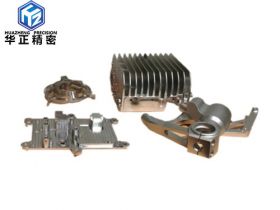News
Recommended Products
Contact Us
Contact Person: Cindy Zhu
TEL:+86 13418453374
How to make five-axis CNC machining simple and convenient
How to make five-axis CNC machining simple and convenient
For mold makers who use multi-axis machine tools, it is a difficult problem to develop CNC programs that can give full play to the capabilities of these machine tools. Its purpose is to make full use of the movement of the additional axis of the machine tool (workbench or tool post) in the most effective way, and at the same time make the mold have a good surface finish.
In recent years, the synchronous movement of machine tools has become more and more complicated, which has also caused CAM software systems to face difficulties in both digital and technical aspects. The rapid development of processing technology has made it difficult to synchronize the development of high-efficiency NC programs that can be used to run machine tool pairs. In addition, software products designed for multi-axis machine tools must be easy to use and capable of error correction. Because the materials, high-precision tools, and accessories used in these advanced pairs of machine tools are very expensive, even minor programming errors can cause significant losses. Based on these premises, the problem faced by CAM software developers is how to combine these powerful programming functions with a programming process that is easy to understand by users. These functions must be clearly stated in order to guide the user through the programming process, so as to avoid errors in the determined tool path. At the same time, it will not make the programming process rigid or restrictive.
Old-style thinking. In order to provide users with multiple solutions, CAM software developers always decompose four-axis and five-axis machining into various special functions that can be used for tool paths. In fact, some CAM developers are proud of their ability to provide a variety of specialized functions. The cost of developing this type of software is to make it difficult to understand the functions of the system. The typical end user can only understand and utilize limited functions. It is impossible for the busy CNC programs to remember the purpose of the many functions of the CAM system, so they usually only program according to the functions they are most familiar with, and ignore other functions.
The new concept of advanced machining functions is based on the idea that any five-axis machining function (no matter how complicated) can be defined in a few simple steps. Mold manufacturers have adopted a tried and tested method to set up mold production procedures.
Four simplified steps
(1) The area to be processed and the processing sequence. This step is based on the complexity of the shape of the part, and is often the easiest to inspire the inspiration of a skilled mechanic.
(2) What shape should the tool path in the processing area have? Should the tool cut in the order of front and back or up and down according to the parametric lines of the surface, and use the surface boundary as a guide?
(3) How to guide the tool axis to make the tool path coincide? This is very important for the quality of the surface finish and whether shorter hard tools are used in a small space. Mold manufacturers need to fully control the tool, including the fore and aft inclination when the tool is tilted. In addition, it is necessary to consider the angular limit caused by the rotation of the worktable or tool post of many machine tools. For example, there are limits to the degree of rotation of milling/turning machine tools.
(4) How to transform the cutting path of the tool? How to control the displacement of the tool due to reset or the displacement of the tool between the machining areas at the starting point of the tool path? The displacement generated by the conversion process is very critical in the production of molds. It can eliminate the evidence line and the traces generated by the tool (which can be removed by manual polishing).
Prev: How to improve the yield rate of shaft parts processing?
Next: Development of five-axis machining technology
Back














